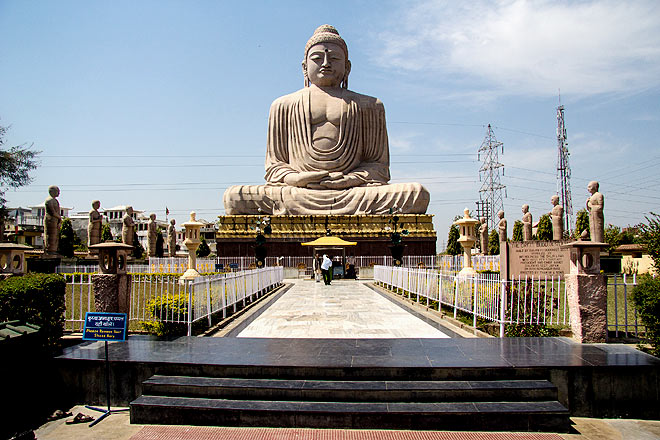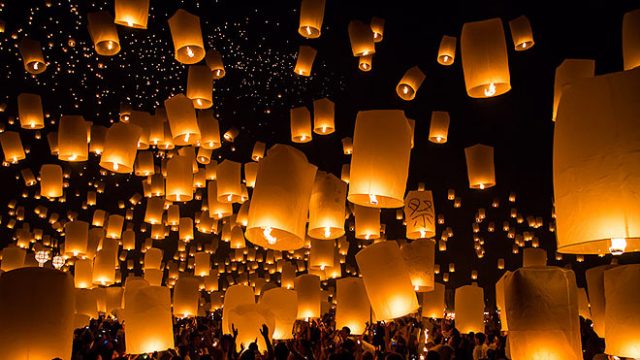Bodh Gaya, Bihar
Pilgrims start arriving at Bodh Gaya’s Mahabodhi Temple complex (a UNESCO World Heritage Site)
In Bodhgaya, almost every nation with a Buddhist following has their own monasteries – Bhutan, China, Japan, Myanmar, Nepal, Sri Lanka, and Thailand. Besides, there are monasteries belonging to the lesser known sects of Indian Buddhism. These monasteries are usually open between 5am-12pm and 2-6pm. Not far from the Thai monastery is a park with the image of the Great Buddha (80feet). Bodh Gaya is connected to the rest of the country through Gaya, 12km away. Avoid travelling to and from Bodh Gaya at night.
Kapilvastu, Uttar Pradesh
Known as Piprahwa now, a section of archaeologists and historians believe this is the site of the palace where Shakya Prince Siddhartha was staying when he saw the three sights that changed his life forever. He was determined to find out why people suffered and travelled for six years until he reached the place that later came to be known as Bodh Gaya. The place is 110km from Gorakhpur and has a UPSTDC tourist lodge (05544-261489). One can also visit Nepal from here to see Buddha’s birthplace, Lumbini.

Kushinagar, Uttar Pradesh
The site of Buddha’s mahaparinirvana (death), Kushinagar is also one of the holiest sites for Buddhists. Since Buddha’s death, many stupas and other memorials have been built here over time. Most of the attractions lie along the 2.5km long Buddha Marg. The most attractive of all is the Mahaparinirvana Temple with its over 20-feet tall statue of reclining Buddha carved in the 5th century. The nearest town Kasia, is 55km from Gorakhpur; the UPSTDC tourist bungalow (Ph.05564-273045) is in Padrauna, the place where Buddha is said to have taken his last meal. www.kushinagar.com.

Rajgir, Bihar
The capital of the Magadhan Empire prior to Pataliputra, Rajgir is better known for its curative hot springs (although the bathing enclosure leaves much to be desired). During the rainy season, Buddha would reside at Griddhakuta Hill, a part of the Ratnagiri chain of hills. On the other end of the Ratnagiri is the Saptaparni Cave where the first international Buddhist council was organised after Buddha’s death to write down his teachings. To commemorate the 2,500 years of the first council, the Japanese Buddhist Association built a stupa above the cave and an aerial ropeway connecting it to the bottom of the hill. The ruins of the famous Nalanda Mahavihara, the university town founded in 411 AD, is 11km from here.

Sarnath, Uttar Pradesh
Located near Varanasi (13km), Buddha delivered his first sermon to five disciples in Sarnath. Emperor Ashoka built several memorials over here. The two most famous stupas here today are the Chaukhandi and the Dhamek Stupa. The Mulagandhakuti Vihara, run by the Mahabodhi Society, contains frescos by the famous Japanese artist Kosetsu Nosu. The Archaeological Museum (www.sarnathmuseumasi.org; closed on Friday) here is the oldest site museum of the Archaeological Survey of India and displays antiquities dating between 3rd century BC and 12th century AD.

Sravasti, Uttar Pradesh
Known as Sahet-Mahet in ancient times, this is where the Buddha performed several miracles. Sravasti is about 180km from Gorakhpur. You can stay at the UPSTDC tourist bungalow (Ph. 05252-265302). shravasti.nic.in.
pilgrim centers
pilgrimage
Leave a Reply
You must be logged in to post a comment.



